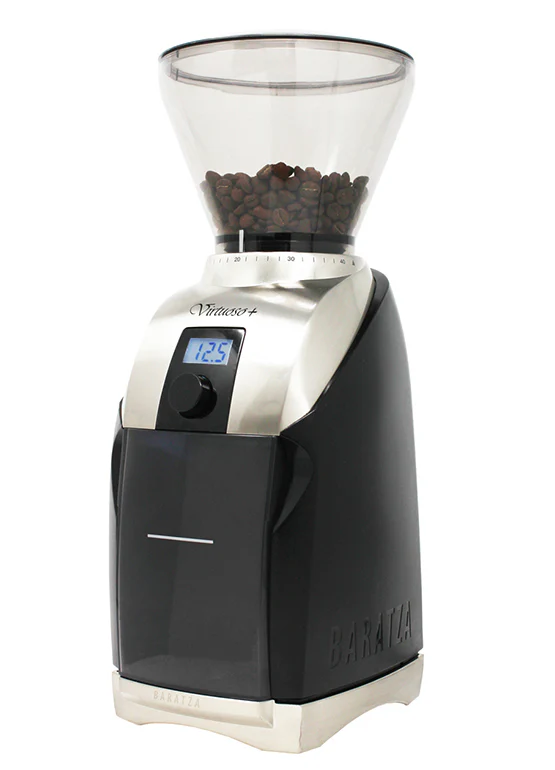The Complete Guide to Grind Size and Coffee Brew Methods
“What grind size should I use?”
This is a question we get all the time and it’s usually something along the lines of, “I’ve got a Baratza Virtuoso+ Grinder. What settings should I use for press, drip, and espresso?”

$249.95
Wouldn’t it be nice if we could just say, "oh, that’s easy. Use a 3 for espresso, 20 for drip and 30 for french press"? Unfortunately, even though most burr grinders have some reference numbers for grind size, the problem is they don’t transfer between different grinders. So we can’t just say if you have grinder “X”, then you should set it to grind size “Y” for making drip coffee. So we created this quick guide to help you zero in on the proper grind size depending on your brewing method.

How to Clean a Coffee Grinder
Between the same make and model of grinder, calibration can be different or the burrs might be more worn so those numbers don’t transfer. Even if they did, the grind size that makes what you consider the perfect cup might not be the same for what we consider the perfect one. In this guide, we visually compared grind sizes and made some basic suggestions about what particle size works for different brew methods.

Best Coffee Grinders of 2022
Best Grind Size for Turkish Coffee

Turkish coffee is ground into a fine powder that is not filtered out of the cup.
The finest grinding is used for Turkish Coffee. Call it extra fine, extremely fine. In fact, when making Turkish coffee the finer the grind the better. It should be almost as fine as baby powder.

A Brief History of Turkish Coffee
Best Grind Size for Espresso and Moka Pots

Espresso needs to be precisely ground to slow down the incoming water while still allowing it to flow evenly.
Moving up in size, for espresso and Moka pots you want a fine grind. A good starting point is something just a little finer than granulated sugar. Grind size for espresso is perhaps the most critical of all the brewing methods. Tiny changes in grind size make for big changes when pulling shots. And that’s why espresso lovers are very particular about their grinders.

The Complete Guide to Coffee Grinders
Best Grind Size for Drip Coffee, Pour Over, and Siphon Brewing

Brewed coffee methods require a medium grind that allows gravity to pull water through the coffee.
Now we’re into the medium grinds. This is the range for drip coffee and brewing methods like pour-over, siphon and vacuum brewing.

What is Siphon Coffee: What You Need to Know About Siphon Coffee Makers
A couple of tips for medium grinds: first, for methods using a filter like drip and pour-over, use a finer medium grind for cone-shaped filters and coarser for flat bottom filters. Second, you can use grind size to make subtle flavor adjustments. If your cup is a little bitter, grinding coarser can help correct for that. For more tips on keeping your grinder in harmony with your coffee, read our blog article How Your Grinder Affects Coffee Flavor.
Best Grind Size for French Press

French press grinds are steeped like tea and need to be coarse so it won't pass through the filter screen.
Moving up again, we’re into a coarse grind used for French press coffee. What you’re looking for is something close to or maybe a little smaller than a coarse salt for particle size.
Best Grind Size for Cold Brew and Cold Press

Cold Brew grinds can be extra coarse as they need to be steeped for up to 24 hours in cold water.
Our last grind size is extra coarse. This is the perfect grind size for making cold brew and it follows a basic principle of grind size which is: the longer water is in contact with the coffee the coarser the grind.
In cold brewing, coffee is in contact with water for 12 hours or more. That’s opposed to a fine grind for espresso with a pressurized water contact time of around 30 seconds.
Final Thoughts
A couple of final thoughts on getting the best possible grind: always grind as close to brewing as possible, and invest in a quality burr grinder. Stay away from blade grinders. Blade grinders hack up coffee into randomly sized bits ranging from dust to chunks, making it impossible to get consistent particle sizes and leading to uneven extractions with poor flavor and muddy cups.


